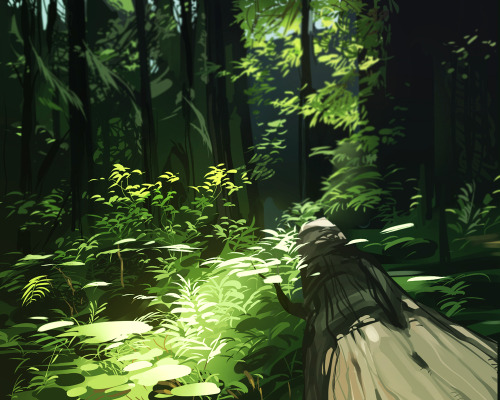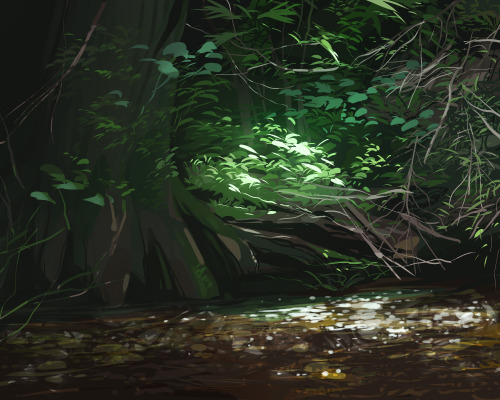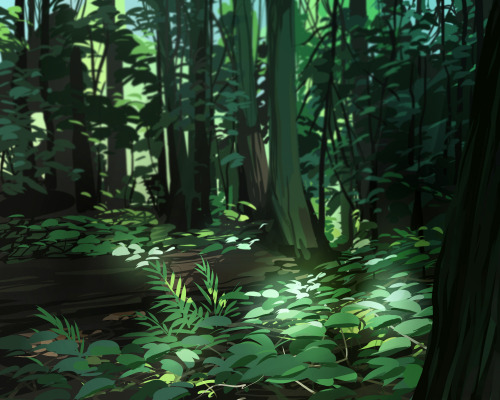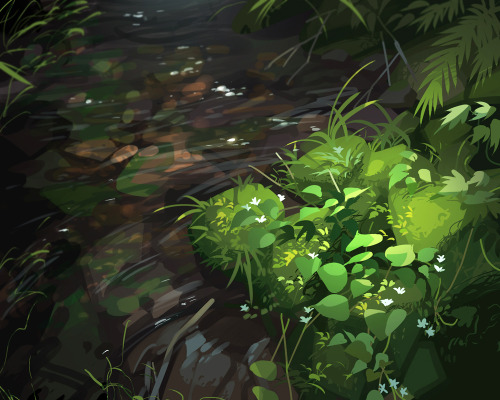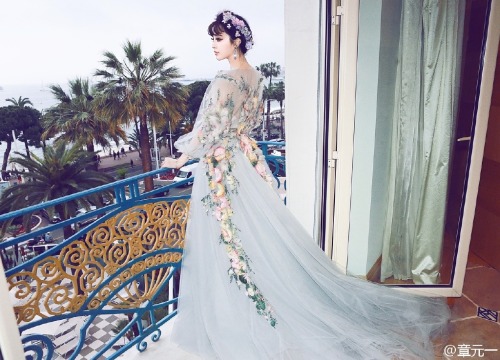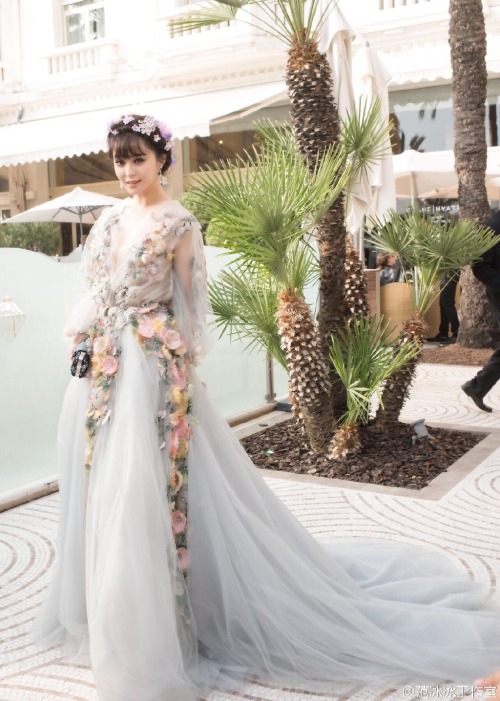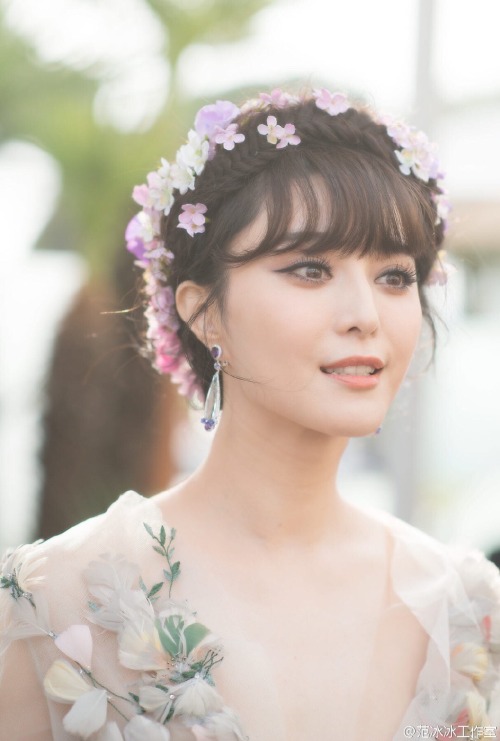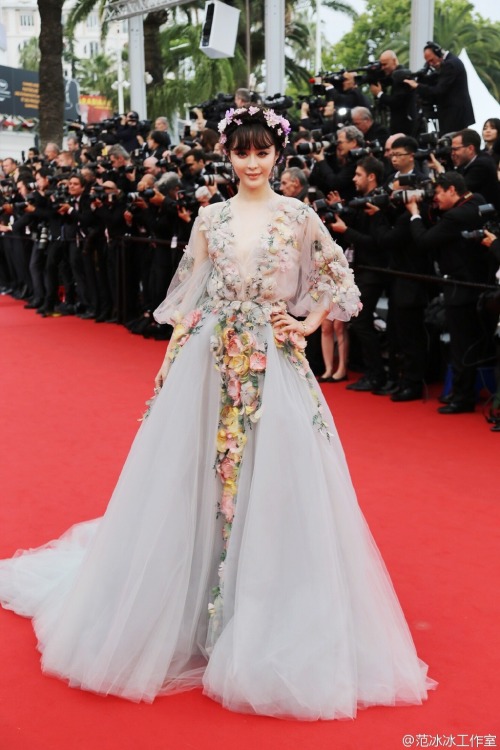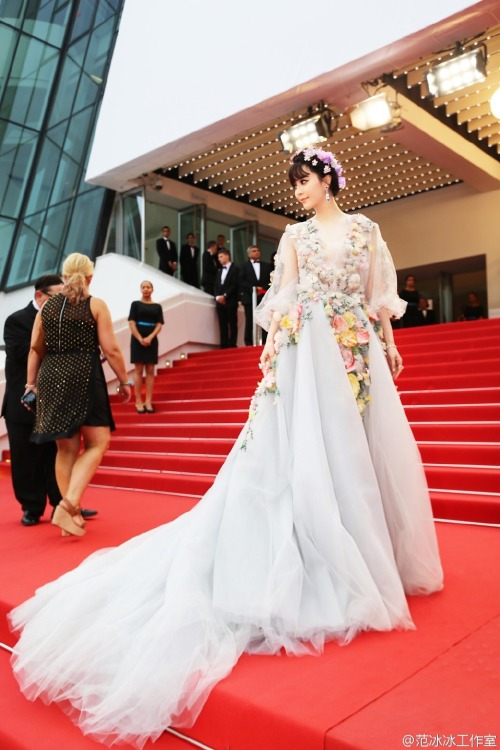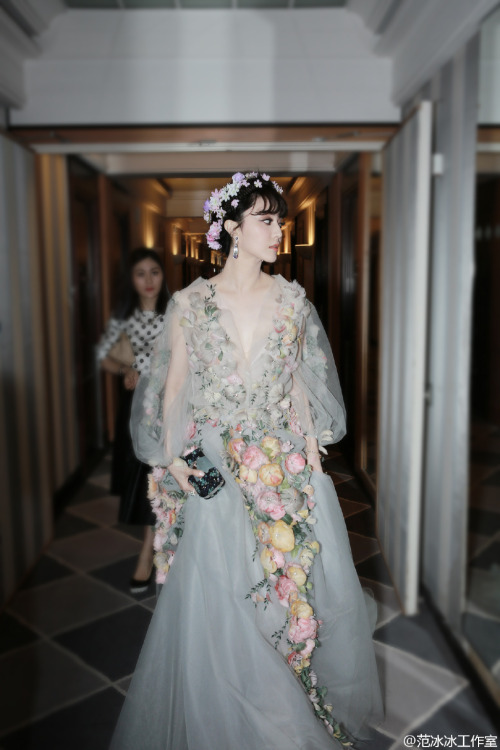If You're An Artist Looking To Diversify Your Faces:
If you're an artist looking to diversify your faces:
click this link
draw whomever you get
don’t worry about making it super-accurate, just focus on the characteristic parts of the face and have fun
the outcome might not look like the ref, but it will be different and more varied than faces you draw out of your head, an dprobably pretty rad on its own right!
feel free to reblog with your drawing, if you want!
More Posts from Zelo-ref and Others
HOW NOT TO DRAW ARCHERY: AN ART TUTORIAL.
DISCLAIMER: I was going to make this “how to draw archery”, but that would probably have taken the rest of my life. This is all stuff I’ve learned from practicing archery in the past, and the tips I’ve given should translate to many, if not all styles of archery. If you take issue with any of the information given here please contact me, as I’m aware I’m not an expert!
Okay, I’ve seen too many bad drawings of archery online. Most of the time I can overlook it, but I’ve made this guide to address drawings where a) the character would hurt/maim themselves if they shot like that, or b) if you tried to shoot like that, the arrow would just make a sad trajectory to the ground, the aerodynamic equivalent of a “WAH-WAH” on a trumpet.
With this in mind:
POINT ONE: WHY IS YOUR ARM LIKE THAT
If successful archery is about one thing, it is about consistency - being able to make your body take exactly the same stance over and over and over again. Your body is a key part of the weapon, and just as you wouldn’t want a gun that had components that wobbled and shifted, you don’t want your body to.
With this in mind, characters shooting, particularly at full draw (this is when the arm pulling the string is stretched all the way back), should have the arm that is holding the bow straight. Not locked - I’ll get into that - but straight. A straight arm is easy to replicate - a bent arm could be at a different angle each time. Simple as that.
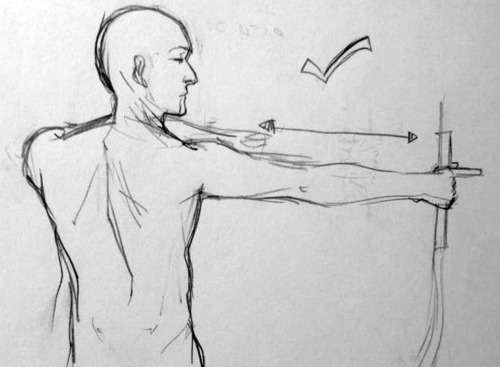
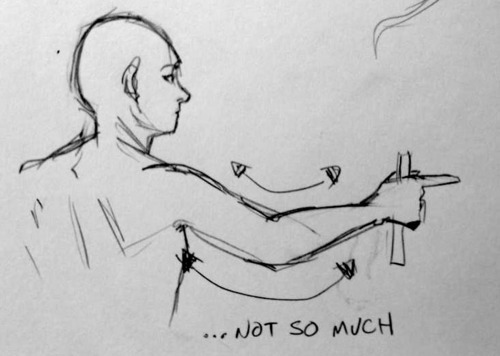
POINT TWO: DON’T SHOOT YOUR TIT OFF
See this diagram
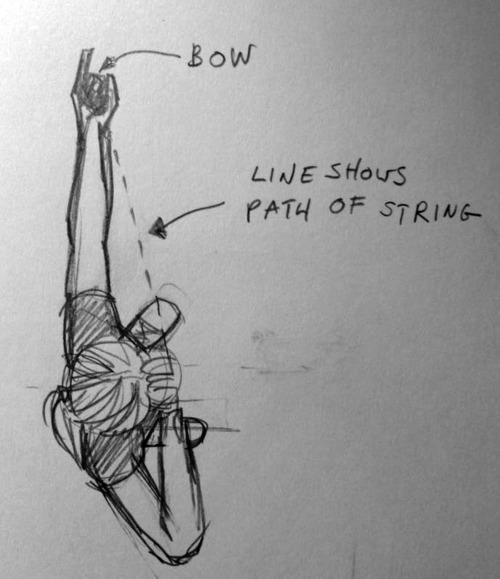
the dotted line is the path the string will take. The string is extremely tight - it has to be for the bow to work. It will therefore move extremely fast. Do you want any part of your body to be in the way of that.
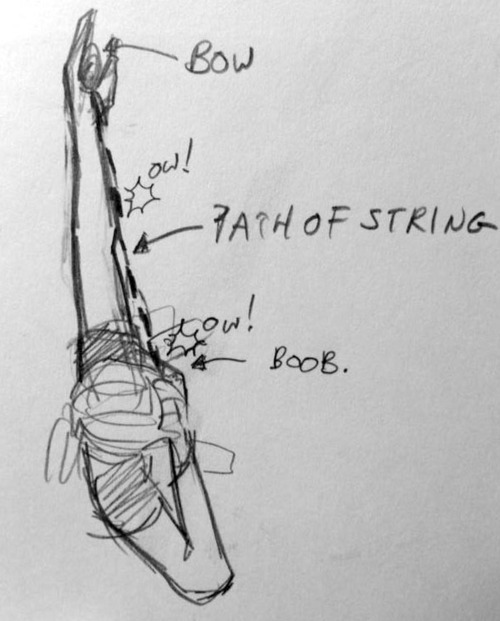
if you have any part of your body (elbows and breasts/pectoral muscles tend to be the worst offenders) in the line of the string, they will get hit. And this will hurt. A LOT. Google “archery bruise” to see how. Yikes. Furthermore, if your arm or chest gets in the way, it’ll knock the arrow off course, and in addition to having sliced your nipple off you’ll have missed your shot too. So KEEP STUFF OUT OF THE PATH OF THE STRING.
side note: this is where the myth of amazons chopping their boobs off came from. Also, why archers sometimes wear chest-guards - this looks like a one-cupped unisex bra. Stylish. Also why archers often wear protective gear called a bracer. This goes on the tender inside of the arm and wrist that might get clipped by the string, not the outside that is nowhere near it.
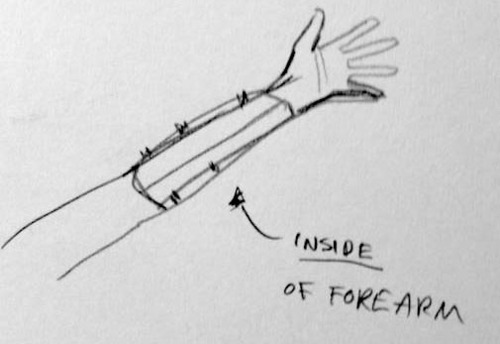
POINT THREE: WHAT ARE YOU DOING WITH YOUR FINGERS STOP THAT
Okay I keep seeing this

Having the fingers clasping the arrow like this makes it highly likely that the pressure from them will send the arrow off-course.
Many modern bows have an arrow rest so you needn’t rest the arrow on your hand at all. If that isn’t the case, it works better to rest the arrow on the first knuckle of the index finger (where it meets the hand). If it’s just being used as a platform, the finger shouldn’t be able to exert enough pressure to make the shot go all over the place. Also you won’t end up shredding your fingers with the fletchings.
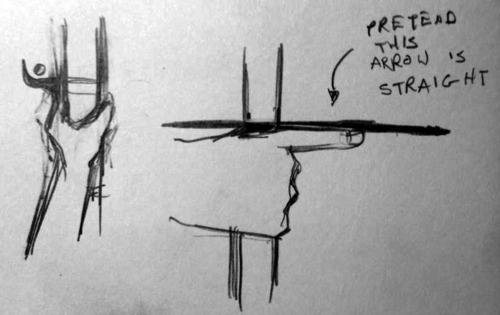
Talking of that…
POINT FOUR: DON’T SLICE YOUR FINGERS OFF
remember what I said earlier about how incredibly taut bowstrings are
imagine pulling that back with your soft fleshy fingers
it is basically like cheesewire through…soft fleshy fingers.
Use protection. Illustrated below are the tab and archery glove, or just go to google or something, stop the madness.

POINT FIVE: PHYSICS DOESN’T WORK LIKE THAT
A strung bow is taut. The body of the bow is pulled by the (very tight) string, making a D shape. An unstrung bow will be straighter.
The tension in the string means a string should always be a straight line. If the bow is drawn, it’s two straight lines.

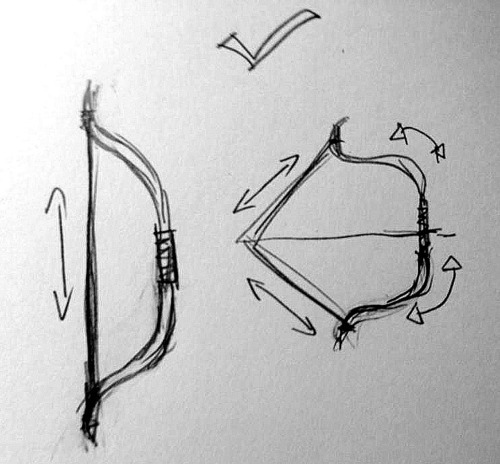
If there is any curve in the string, the arrow will probably fall limply to the floor.
ALSO. When the string is drawn back, it exerts more pressure on the bow, creating that really exaggerated curve. This is where the power comes from. (I think. I am not physics). Basically, if you’re drawing a character at full draw, the string should be straight and the bow should be curved. If the opposite is true something very wrong has happened and you should be sad.
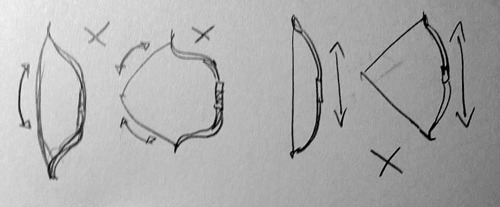
OKAY! I hope this has been helpful, if you have any questions or concerns let me know. And if in doubt, doctor google will help you - look at olympic or professional archers, and see how they’re standing and how their bows behave.
GOOD LUCK DRAWING!

Balmain F/W 2016 Menswear Paris Fashion Week
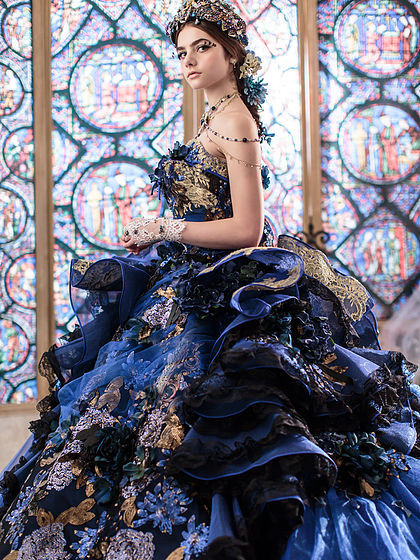
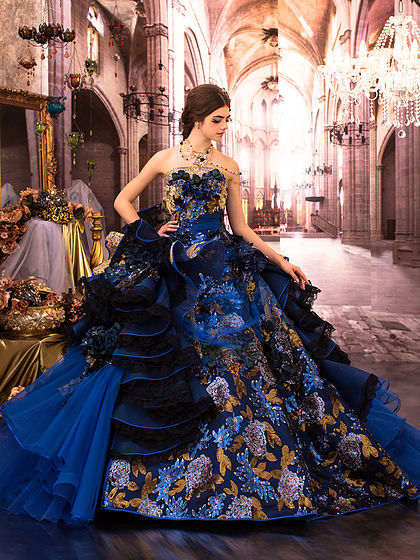

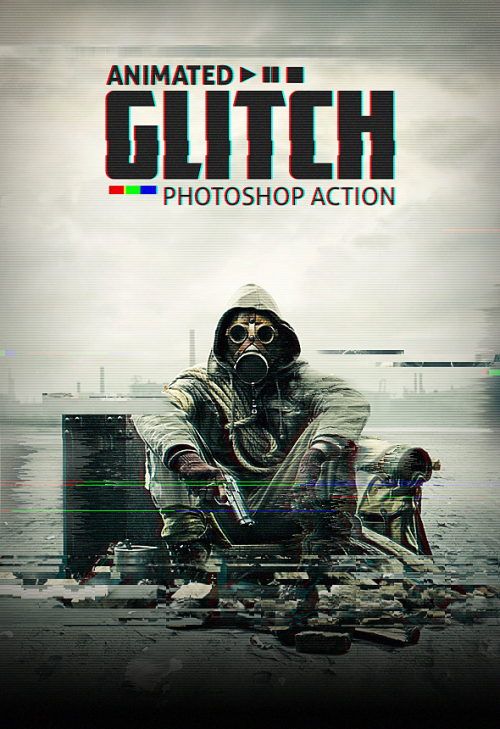
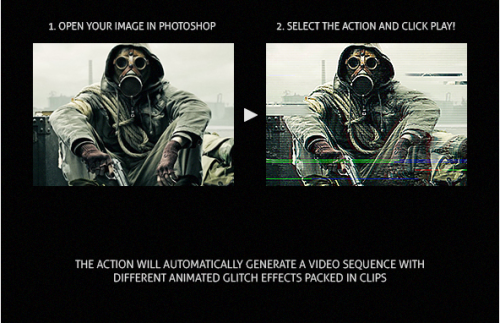
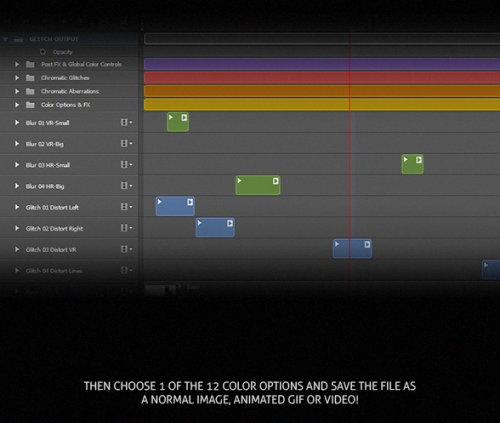
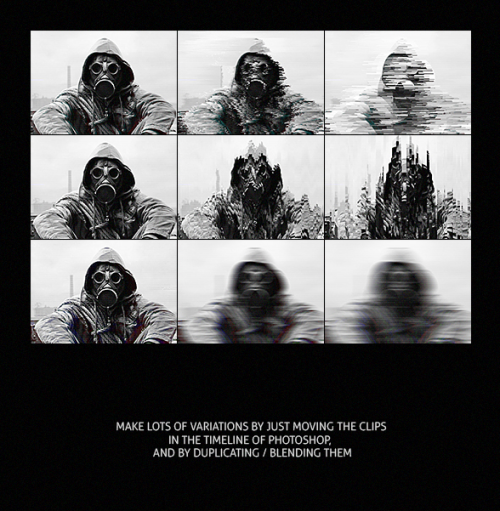
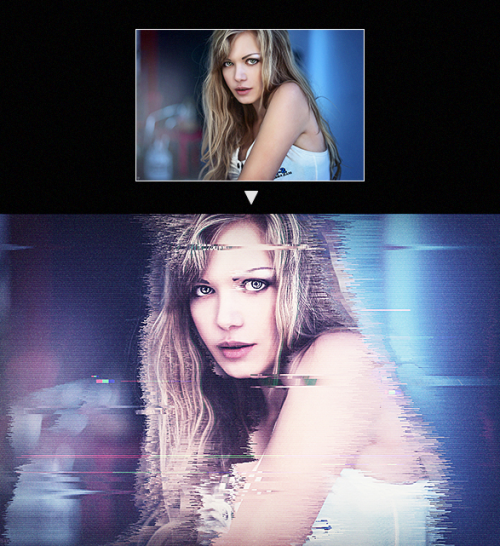



Animated Glitch - Photoshop Action
This Action will generate a video sequence of animated glitch effects from your photos, logo or artwork. The effects are packed in clips and are easy to edit in the Timeline of Photoshop, in few clicks you’ll be able to make many variations and then export the file as a normal image, animated gif or video!
Download it here: http://bit.ly/glitchps
–
Check this other cool effect: graphicdesignblg.com/post/130011794003/








Rapier with Scabbard
Dated: 1575-1583
Geography: made in Dresden, Saxony, Germany, Europe
Medium: engraved steel [blade]; blackened iron, pierced and engraved silver, wood, silver wire [hilt]; pierced and engraved silver, wood, leather [scabbard]
Measurements: pommel: 2 ½ × 2 13/16 inches (6.3 × 7.1 cm); blade: 11/16 × 42 3/8 inches (1.8 × 107.6 cm); width (quillons): 9 15/16 inches (25.2 cm); depth: 5 13/16 inches (14.8 cm); scabbard: 2 ½ inches × 7/8 inches × 3 feet 2 ½ inches, 8.1 ounces (6.4 × 2.3 × 97.8 cm, 230g)
The blade of the sword was made by bladesmith Andrea Ferrara, Italian (active Belluno), active 1550 - 1583. The sword features silver mounts of rapier and scabbard probably by silversmith Wendel unter den Linden, German (active Dresden), active 1566 - 1593, died before 1610.
Source: Copyright © 2016 Philadelphia Museum of Art
-
 sullencrab liked this · 2 months ago
sullencrab liked this · 2 months ago -
 funnymicrobe liked this · 2 months ago
funnymicrobe liked this · 2 months ago -
 thankourluckystars liked this · 2 months ago
thankourluckystars liked this · 2 months ago -
 archive-of-sorts reblogged this · 3 months ago
archive-of-sorts reblogged this · 3 months ago -
 hacker-void liked this · 3 months ago
hacker-void liked this · 3 months ago -
 landofnod liked this · 3 months ago
landofnod liked this · 3 months ago -
 fearless-stormclaw liked this · 4 months ago
fearless-stormclaw liked this · 4 months ago -
 sorcerers-quest reblogged this · 5 months ago
sorcerers-quest reblogged this · 5 months ago -
 leefl00f liked this · 5 months ago
leefl00f liked this · 5 months ago -
 assholeierthanthou liked this · 5 months ago
assholeierthanthou liked this · 5 months ago -
 assholeierthanthou reblogged this · 5 months ago
assholeierthanthou reblogged this · 5 months ago -
 loveasachoice liked this · 5 months ago
loveasachoice liked this · 5 months ago -
 cryptidsteeth liked this · 5 months ago
cryptidsteeth liked this · 5 months ago -
 dudiddypartay liked this · 6 months ago
dudiddypartay liked this · 6 months ago -
 satanandgorgeous liked this · 6 months ago
satanandgorgeous liked this · 6 months ago -
 ruleofool liked this · 7 months ago
ruleofool liked this · 7 months ago -
 theparocine liked this · 7 months ago
theparocine liked this · 7 months ago -
 k4ttfisk liked this · 8 months ago
k4ttfisk liked this · 8 months ago -
 laundry-basket-turtle reblogged this · 8 months ago
laundry-basket-turtle reblogged this · 8 months ago -
 laundry-basket-turtle liked this · 8 months ago
laundry-basket-turtle liked this · 8 months ago -
 screaming-fan-girl liked this · 8 months ago
screaming-fan-girl liked this · 8 months ago -
 ladystardust-ina-moonagedaydream liked this · 8 months ago
ladystardust-ina-moonagedaydream liked this · 8 months ago -
 nyx-taylors-version liked this · 8 months ago
nyx-taylors-version liked this · 8 months ago -
 nyx-taylors-version reblogged this · 8 months ago
nyx-taylors-version reblogged this · 8 months ago -
 multidimensionalfang1rl liked this · 8 months ago
multidimensionalfang1rl liked this · 8 months ago -
 kuporef reblogged this · 8 months ago
kuporef reblogged this · 8 months ago -
 mmishee-alt liked this · 9 months ago
mmishee-alt liked this · 9 months ago -
 fangs-413 liked this · 9 months ago
fangs-413 liked this · 9 months ago -
 tonighthatimightsee liked this · 9 months ago
tonighthatimightsee liked this · 9 months ago -
 ssherbet-shares reblogged this · 9 months ago
ssherbet-shares reblogged this · 9 months ago -
 ssherbet-shares liked this · 9 months ago
ssherbet-shares liked this · 9 months ago -
 kirbyscreeper liked this · 9 months ago
kirbyscreeper liked this · 9 months ago -
 corvidcrybaby reblogged this · 9 months ago
corvidcrybaby reblogged this · 9 months ago -
 corvidcrybaby liked this · 9 months ago
corvidcrybaby liked this · 9 months ago -
 chais-corner liked this · 9 months ago
chais-corner liked this · 9 months ago -
 kohitsuji liked this · 9 months ago
kohitsuji liked this · 9 months ago -
 nothing-cereal liked this · 10 months ago
nothing-cereal liked this · 10 months ago -
 kindeyes-world liked this · 10 months ago
kindeyes-world liked this · 10 months ago -
 westifer14 liked this · 10 months ago
westifer14 liked this · 10 months ago -
 greattyphoontimemachine liked this · 11 months ago
greattyphoontimemachine liked this · 11 months ago -
 marzipanwithaplan reblogged this · 11 months ago
marzipanwithaplan reblogged this · 11 months ago -
 aatpg liked this · 11 months ago
aatpg liked this · 11 months ago -
 fractalref reblogged this · 11 months ago
fractalref reblogged this · 11 months ago -
 we-were-d3stined-t0-expl0de reblogged this · 11 months ago
we-were-d3stined-t0-expl0de reblogged this · 11 months ago -
 we-were-d3stined-t0-expl0de liked this · 11 months ago
we-were-d3stined-t0-expl0de liked this · 11 months ago -
 shrikevibe reblogged this · 1 year ago
shrikevibe reblogged this · 1 year ago -
 shadowsden97 liked this · 1 year ago
shadowsden97 liked this · 1 year ago -
 soballoonist liked this · 1 year ago
soballoonist liked this · 1 year ago -
 glittergit reblogged this · 1 year ago
glittergit reblogged this · 1 year ago
